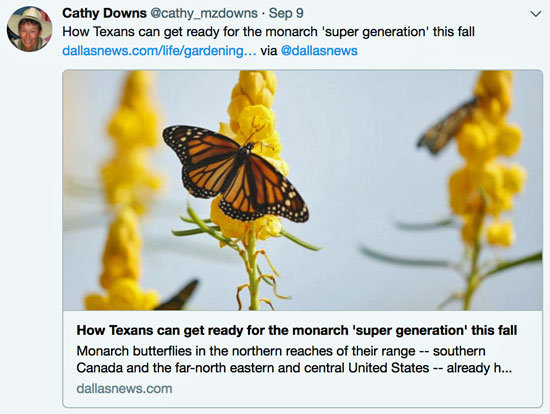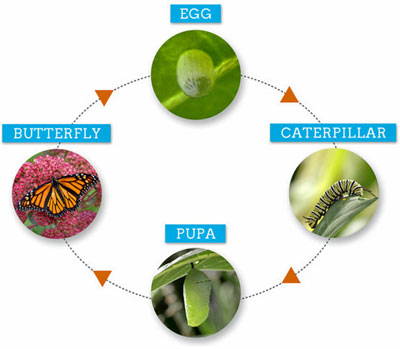
#VintageTweets – Monarch Butterflies The Super-Generation Are Coming
This is a tweet I recently retweeted from Native Plant Society of Texas Monarch Maven Cathy Downs. Until becoming a Texas Master Naturalist a few years ago, I would not have known what Cathy was talking about when she refers to super-generations of Monarch Butterflies. So, I figured that this was a good tweet that needed more than the customary 140 characters limited by Twitter.
Most everyone knows the life cycle of the Monarch (shown below) from their cute looking little green caterpillars that evolve from eggs laid on milkweed leaves to their beautiful multicolored (orange, black and white) adult butterflies. Still, what is meant by the “super-generation”?

Simply put, the super-generation monarchs occur every four generations. They have a much longer lifespan than normal monarch butterflies and live long enough to travel all the way back from the northern United States to their winter homeland in the mountains of Mexico.
This miracle of nature is triggered by the shortening day length and lower temperatures, along with aging milkweed and other nectar sources. These butterflies live eight times longer than their parents and grandparents-up to eight months, and travel 10 times farther. To do this, they must conserve energy by storing fat in both the caterpillar and butterfly life stages and waiting to lay their 700 eggs until spring. Click here for more information.
— — — — —
Click here to find out how Texans can get ready for the 2017 coming of the super-generation Monarch Butterflies. The most important thing is to cut back your non-native tropical milkweed to the ground during the month of October. This will encourage the butterflies to continue south on their migratory journey to Mexico to overwinter there. Even though Monarchs are beautiful specimens of nature and you’d love to keep them around, please cut back your milkweed (and encourage others to do the same) for the good of the species.

Be the first to comment